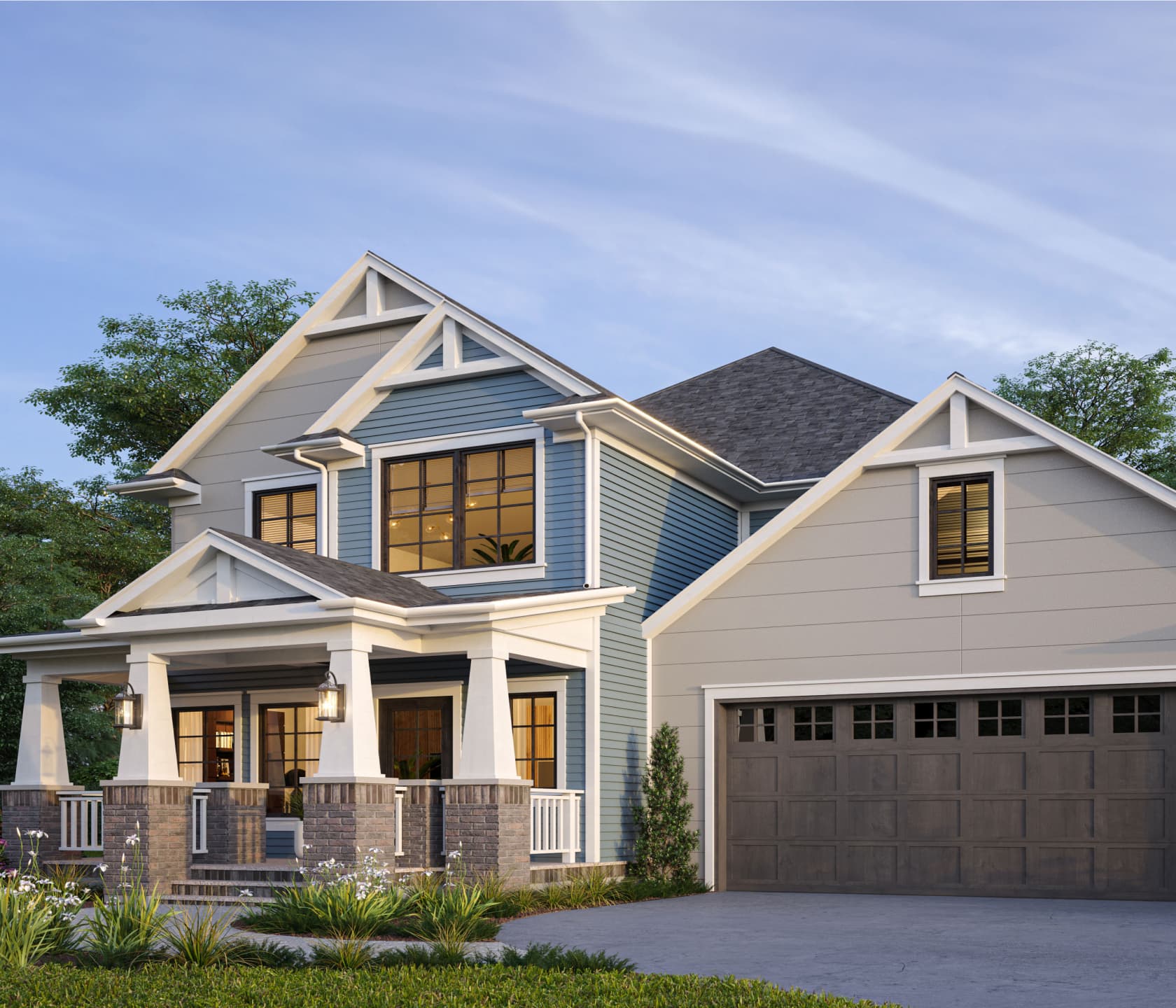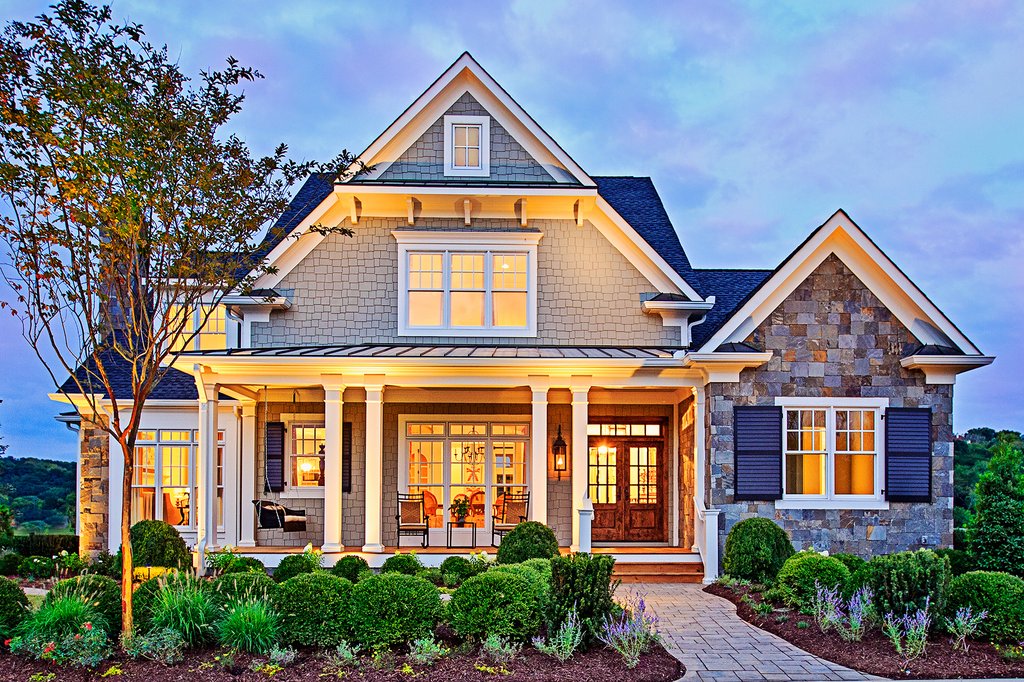Tips for Communicating Your Vision When Designing a craftsman style house
Wiki Article
The Role of Arts & & Crafts Architects in Elevating Architectural Solutions in Residential Style
Arts and Crafts architects substantially influence property layout with their dedication to workmanship and sustainability. They prioritize handmade information and all-natural products, which improve both aesthetics and community identity. By entailing clients in the layout procedure, these architects develop distinct space that reverberate with individual tastes. This technique questions about the future trajectory of domestic architecture and its potential influence on neighborhood characteristics. craftsman style house. What lies ahead for this timeless layout viewpoint?
The Concepts of Arts and Crafts Architecture
The significance of Arts and Crafts architecture hinges on its commitment to workmanship and simpleness. This building motion arised in the late 19th century as a reaction to industrialization, emphasizing the value of handmade information and natural products. The principles of Arts and Crafts architecture focus on performance and harmony with the atmosphere. Frameworks usually feature low-pitched roofs, wide eaves, and revealed rafters, advertising a feeling of unity with nature.Artisans played a considerable role in this design, often integrating attractive elements like tarnished glass, tiles, and woodwork, which mirror neighborhood craftsmanship. The shade palette often tends to be earthy and subdued, permitting structures to blend flawlessly into their environments. On top of that, the style encourages open layout and public spaces, promoting a feeling of togetherness. Overall, the principles of Arts and Crafts architecture commemorate the elegance of simplicity and the significance of human link to both nature and community.

Lasting Practices in Residential Style
While the need for environmentally accountable living remains to grow, lasting practices in residential design have actually obtained considerable traction among architects and homeowners alike. Architects are increasingly incorporating energy-efficient innovations and sustainable products into their designs, aiming to reduce carbon impacts and enhance energy preservation. Techniques such as easy solar style, green roof coverings, and rainwater harvesting systems are ending up being standard parts of modern-day domestic architecture.Moreover, the selection of in your area sourced materials reduces transport emissions and supports regional economic climates. Focus on natural light and ventilation not only boosts indoor air top quality yet likewise reduces reliance on artificial lights and environment control systems. These lasting methods mirror a commitment to maintaining the environment while giving property owners with comfortable, reliable living spaces. As awareness of ecological concerns grows, the assimilation of sustainability in household design is positioned to end up being a defining quality of modern architecture, guided by the concepts developed by Arts and Crafts architects.
Personalization and Personalization in Home Layout
Personalization and personalization in home style have become crucial patterns in feedback to the growing desire for distinct living atmospheres that show private visit this site right here tastes and way of lives. House owners progressively seek to customize rooms that resonate with their individualities, leading to a more purposeful connection with their space. craftsman style house. This motion motivates architects to engage clients in the style process, cultivating cooperation that ensures the last outcome personifies the home owner's visionComponents such as bespoke formats, custom products, and tailored surfaces allow for a diverse series of expressions in household style. Arts and Crafts architects play a pivotal role in this advancement, emphasizing craftsmanship and top quality. Their concentrate on integrating artistic components with performance warranties that each home is not just cosmetically pleasing but likewise distinctly fit to the occupants' requirements. This focus on personalization improves the overall property experience, creating rooms that are both personal and enduring.
The Impact of Arts and Crafts Architects on Neighborhood Appearances
As communities evolve, the impact of Arts and Crafts architects significantly forms their aesthetic landscape. By stressing handmade information, natural materials, and conventional building strategies, these architects produce homes that resonate with their surroundings. Their layouts commonly include neighborhood plants, appearances, and shades, promoting a feeling of consistency between developed environments and nature.The Arts and Crafts activity advertises neighborhood identity through building continuity. By urging homeowners to take on comparable style concepts, areas develop a natural character that improves aesthetic allure. This architectural harmony not only enhances the aesthetic experience yet likewise instills a feeling of satisfaction amongst homeowners.
The emphasis on sustainability and craftsmanship in Arts and Crafts architecture aligns with modern values, making these styles appropriate in modern setups. Eventually, Arts and Crafts architects add significantly to the total appeal and cultural integrity of communities, leaving a lasting influence on their aesthetic tradition.

Future Fads in Arts and Crafts Architecture
With a boosting focus on sustainability and personalization, future patterns in Arts and Crafts architecture are positioned to mix conventional craftsmanship with modern-day innovation - craftsman style house. Architects are most likely to focus on green products, making use of recovered timber and all-natural stone to boost the sustainability of domestic designs. The assimilation of clever home technology will certainly become prevalent, permitting for individualized living experiences without endangering visual integrityThe revival of artisanal methods will promote a restored appreciation for handcrafted components, such as bespoke kitchen cabinetry and custom-made floor tile job. Future styles may additionally mirror an emphasis on community-oriented spaces, check my blog motivating interaction and connection among residents. Outdoor living areas will certainly gain importance, seamlessly incorporating nature right into the home atmosphere. As Arts and Crafts architecture develops, it will certainly continue to honor its origins while adapting to modern needs, developing harmonious areas that mirror private values and lifestyles.
Often Asked Questions
What Inspired the Arts and Crafts Movement in Architecture?
The Arts and Crafts motion in architecture was inspired by a reaction against industrialization, emphasizing handcrafted high quality, all-natural materials, and a go back to traditional craftsmanship, aiming to develop harmonious, practical areas that celebrated artistry and originality.How Do Arts and Crafts Architects Collaborate With Clients?
Arts and crafts architects work together with clients with open dialogue, focusing on individual demands and appearances. They emphasize workmanship and sustainability, fostering a partnership that incorporates the client's vision with the designer's expertise in layout and materials.What Products Are Frequently Utilized in Arts and Crafts Residences?
More Help Typical products in Arts and Crafts homes consist of all-natural wood, stone, and brick, emphasizing craftsmanship and organic visual appeals. These components produce a cozy, inviting ambience, mirroring the motion's dedication to quality and simplicity in layout.Just how Do Arts and Crafts Layouts Improve Indoor Living Areas?
Arts and Crafts designs boost interior home by advertising natural light, open layout, and handcrafted information. These components promote a warm, welcoming ambience, motivating a connection between homeowners and their atmospheres with thoughtful, useful visual appeals.What Are Some Famous Instances of Arts and Crafts Architecture?
Famous examples of Arts and Crafts architecture consist of the Wager Home, Greene and Greene's work of art in California, and the Robie Home by Frank Lloyd Wright. These frameworks showcase handcrafted information and consistency with nature, defining the movement's essence.Report this wiki page